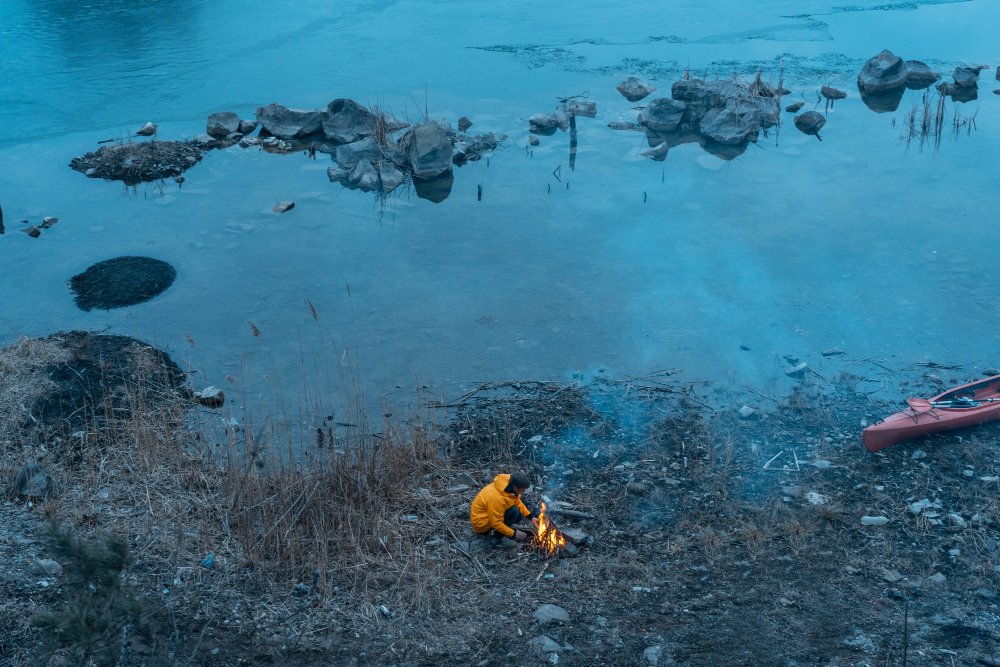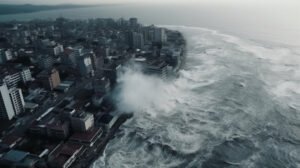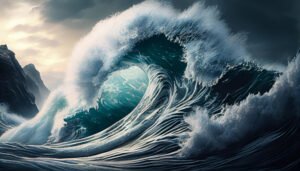Briefly about the sea
A sea is a vast reservoir of salt, similar to most of the Earth’s surface. Exclusive seas are marginal seas, second-order parts of oceanic seas (the Mediterranean Sea), or certain large, nearly land-locked bodies of water.
The salinity of water bodies varies, with large rivers on land having lower salinities near their mouths and higher salinities in the ocean depths. Water contains salts of magnesium, calcium, potassium, and mercury, among many other elements, some in minute concentrations. The most abundant solid dissolved in seawater is sodium chloride. Various organisms, including bacteria, protozoa, algae, plants, fungi, and animals, live in the sea. Provides a wide range of marine habitats and ecosystems, from shorelines to great depths and pressures. Most of the major groups of organisms evolved in the sea, where life may have originated.
The ocean moderates Earth’s climate and plays an important role in the water, carbon and nitrogen cycles. The water surface interacts with the atmosphere. Waves are caused by wind. Cold water is carried from near the poles to all oceans and significantly affects the Earth’s climate. Tides, usually the twice-daily rise and fall of sea level, are caused by the Earth’s rotation and the gravitational effects of the Moon and, to a lesser extent, the Sun. A bay or estuary can have a very high tide range. Earthquakes and large undersea explosions caused by tectonic movements under the ocean, such as volcanoes, large landslides or the impact of large meteorites, can lead to devastating tsunamis.
The sea has been an integral part of humans throughout history. The sea provides significant food supplies for humans, mainly fish, but also for seaweed, mammals, and seaweed, whether caught by fishermen or cultivated underwater. Other human uses of the sea include trade, tourism, mineral extraction, power generation, warfare, and recreational activities such as swimming, sailing, and scuba diving. However, many of these activities cause marine pollution.
Studies of the Ocean

Earth is the only planet with watery seas on its surface. Mars has ice sheets, but similar planets in other solar systems may have oceans. Seawater comprises 97.2% of Earth’s 1 335 000 000 cubic kilometers of water, and water covers approximately 71 percent of its surface. The ice sheet covers the Arctic Ocean, Antarctica, and adjacent seas and is found in various glaciers and surface deposits around the world. The rest is in underground reservoirs or at various times in the water cycle. Lakes and rivers are naturally created when the vapor in the air, the clouds it slowly forms, the rain that falls from them, and its water flow repeatedly into the sea. Hydrology is the scientific study of water and the Earth’s water cycle; hydrodynamics is the study of the physics of moving water. Oceanography is the most closely related study of the sea in particular. It examines the properties of seawater, studies waves, tides, and currents, charts coastlines and maps the seabed, and studies marine life.
Seawater
A characteristic of sea water is that it is salty. Salinity is usually measured in parts per thousand, and the open ocean has 35 grams of solids per liter, a salinity of 35%. The Mediterranean Sea has a salinity of just over 38%, while the Northern Red Sea can reach 41% salinity. Some inland lakes have much higher salinity; for example, the Dead Sea has 300 grams of dissolved solids per liter (300 %).
The constituents of table salt (sodium and chloride) make up about 85 percent of the solids in solution, along with other metal ions such as magnesium and calcium and negative ions including sulfate, carbonate, and bromide.
Although the salt content of the ocean remains relatively constant over the course of millions of years, various factors affect salinity. The byproduct of evaporation and ice formation increases salinity and reduces precipitation, melting sea ice, and runoff from land. For example, many rivers flow into the Baltic Sea, so the sea can be considered a brackish sea. Meanwhile, the Red Sea is very salty due to its high evaporation rate.
Solute | Concentration (‰) | % of total salts |
Chloride | 19.3 | 55 |
Sodium | 10.8 | 30.6 |
Sulphate | 2.7 | 7.7 |
Magnesium | 1.3 | 3.7 |
Calcium | 0.41 | 1.2 |
Potassium | 0.40 | 1.1 |
Bicarbonate | 0.10 | 0.4 |
Bromide | 0.07 | 0.2 |
Carbonate | 0.01 | 0.05 |
Strontium | 0.01 | 0.04 |
Borate | 0.01 | 0.01 |
Fluoride | 0.001 | <0.01 |
All other solutes | <0.001 | <0.01 |
Temperature
The temperature of the sea depends on the amount of solar radiation falling on its surface. In the tropics, when the sun is close to the head, the temperature of the surface layers can rise to 30 °C and the sea ice equilibrium temperature near the poles is −2 °C There is a continuous circulation of water in the oceans.
Warm surface currents cool as they move away from the tropics, causing the water to condense and sink. Cold water moves back towards the equator as a deep ocean current, causing changes in the water’s temperature and density.
Seawater with an average salinity of 35% has a freezing point of about −1.8 °C. When its temperature is low enough, ice crystals form on the surface. These break into small pieces and aggregate into flat discs, forming a solid suspension known as frazil. In still conditions, this freezes into a thin, flat sheet called a nilas, which thickens as new ice forms on its underside. In more turbulent seas, frazil crystals aggregate into flat discs known as pancakes. These slide under each other and join together to form a flow. During the freezing process, salt, water, and air are trapped between the ice crystals. Nilas’ salinity can be 12–15 %, but when sea ice is one year old, this drops to 4–6 %
Tsunami
tsunami is the biggest damage caused by the sea to man. A tsunami is an unusual wave form caused by a rare, powerful event such as an underwater earthquake or landslide, a meteorite crash, a volcanic eruption, or the collapse of land into the sea.
These events can temporarily raise or lower the sea level in the affected area, usually by several feet. The potential energy of the displaced seawater is converted into kinetic energy and creates a shallow wave, a tsunami, which propagates outward with a velocity proportional to the square root of the water depth and therefore travels faster than in the open ocean. In the deep open ocean, tsunamis have wavelengths of 80 to 300 miles (130 km). 480), travel at speeds in excess of 600 miles per hour (970 km/h) and are typically less than three feet tall. , so they often go unnoticed at this stage. In contrast, wind-driven ocean surface waves have wavelengths of several hundred feet, travel up to 65 miles per hour (105 km/h), and are up to 45 feet (14 m) high.
[As a tsunami moves into shallower water, its speed slows, its wavelength shortens, and its amplitude increases greatly.] Characteristics of a tsunami may first reach the shore. In the former case, the sea recedes and near-shore tidal areas are exposed, providing a useful warning to people on land. After a tsunami, floodwaters can flow back into the sea, dragging away debris and people and causing much destruction. Often, several tsunamis are caused by a single geological event and occur between eight minutes and two hours apart. The first wave to hit the beach may not be the biggest or most destructive.
However, the sea balances the earth’s existence to a great extent.
Author By :Samindya Rathnaweera




